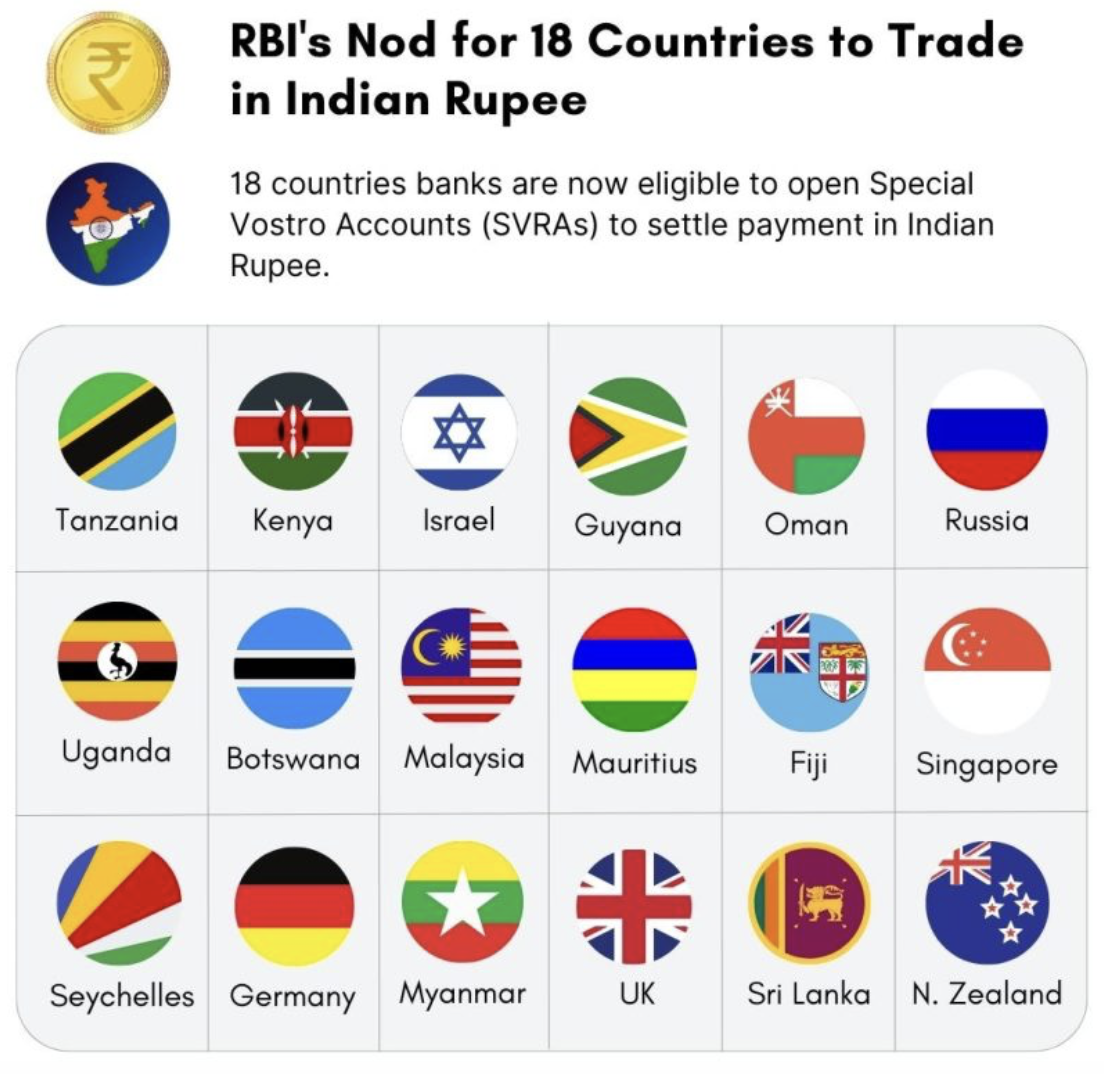India is strategically planning to enhance bilateral trade with Russia to $100 billion by 2030 in an effort to reduce its rising oil import costs and dependency on the US dollar.
According to the BIS Triennial Central Bank Survey 2022, if rupee turnover rises to equal the share of non-US, non-Euro currencies in global forex turnover (4%), it will be regarded as an international currency.
Currently, the US dollar, the Euro, the Japanese yen and the pound sterling are the leading reserve currencies in the world.
|
Factors Determining the Global Position of a Currency |
|

|
Indian currency beyond India |
|
The Special Drawing Rights (SDR) is an international reserve asset created by the IMF to supplement the official reserves of its member countries. Its value is based on a basket of 5 currencies (U.S. dollar, Euro, Chinese renminbi, Japanese yen and the British pound sterling).